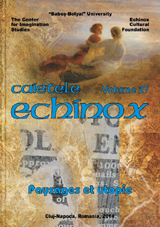Le Capital de la vie céleste. Doctrines sotériologiques taoïstes et bouddhistes sous la dynastie T’ang (Tang)
The Capital of Celestial Life: Taoist and Buddhist Soteriological Doctrines during the Tang Dynasty
Author(s): Silviu LupaşcuSubject(s): Cultural history
Published by: Universitatea Babeş-Bolyai
Keywords: T’ang (Tang) dynasty; Emperor Hsüan-tsung (Xuanzong); Daoism; Buddhism; “augmentation of the celestial life’s capital (suan)”; Mahāvairocanābhisabodhi sūtra.
Summary/Abstract: Emperor Hsüan-tsung (Xuanzong)’s gradual retreat from political life, towards the end of his rule (742-756), must be understood in connection with his devotion to the precepts of Daoism and esoteric Buddhism, which postulate the attainment of spiritual accomplishment through contemplation and serene retreat, far away from the conflicts and the violence of this world. The competitive and polemical syncretism which defined the relationship between Daoism and Buddhism from the end of Han dynasty until the end of T’ang (Tang) dynasty (189-907) is emphasized by the construction of the religious identity of the Saviours, a mystical method of meditation through the visualization of Lao-tzu (Laozi), Buddha and the divine beings of the Daoist and Buddhist pantheons, by the cult devoted to the sacred books, and also by the Daoist re-writings of the Buddhist texts and the Buddhist re-writings of the Daoist texts. Among the sacred texts which most certainly inhabited emperor Hsüan-tsung (Xuanzong)’s meditations between his abdication and his death, during the years 756-762, mention should be made of the Daoist-Buddhist writings on the “augmentation of the celestial life’s capital (suan)” and the Mahāvairocanābhisabodhi sūtra.
Journal: Caietele Echinox
- Issue Year: 2014
- Issue No: 27
- Page Range: 127-138
- Page Count: 12
- Language: French
- Content File-PDF

